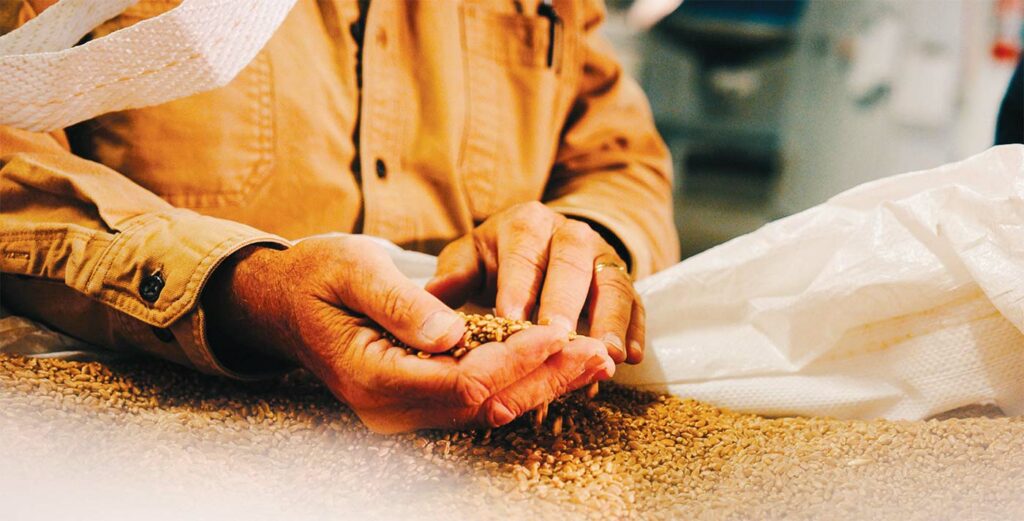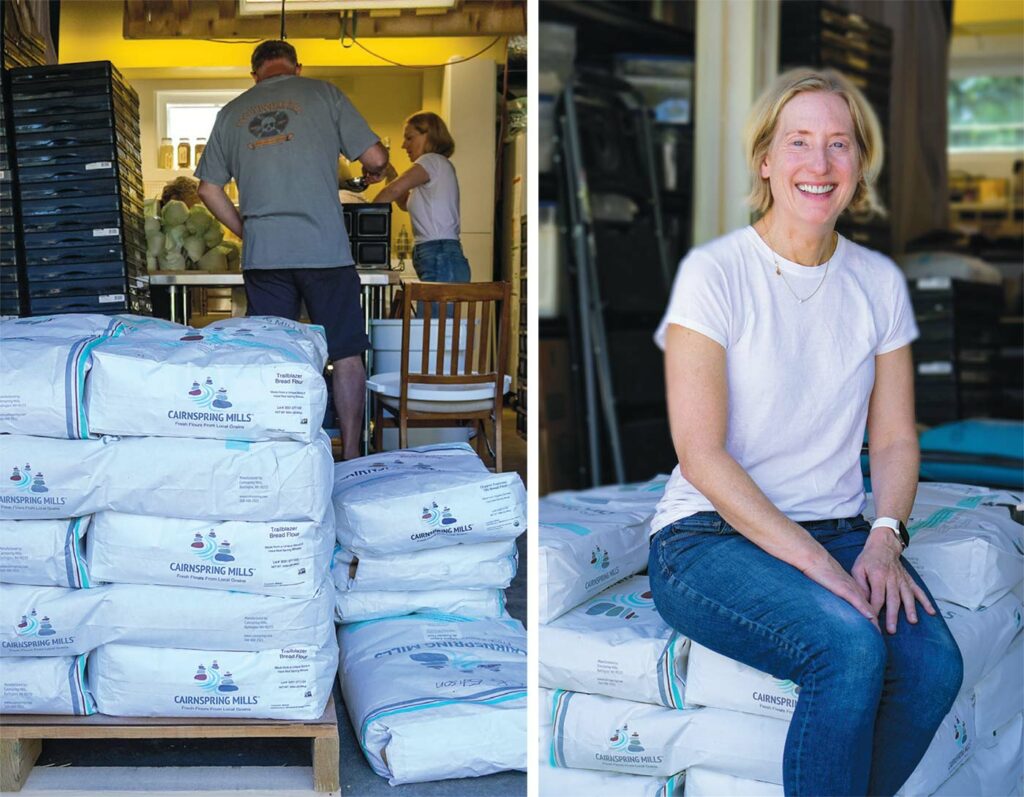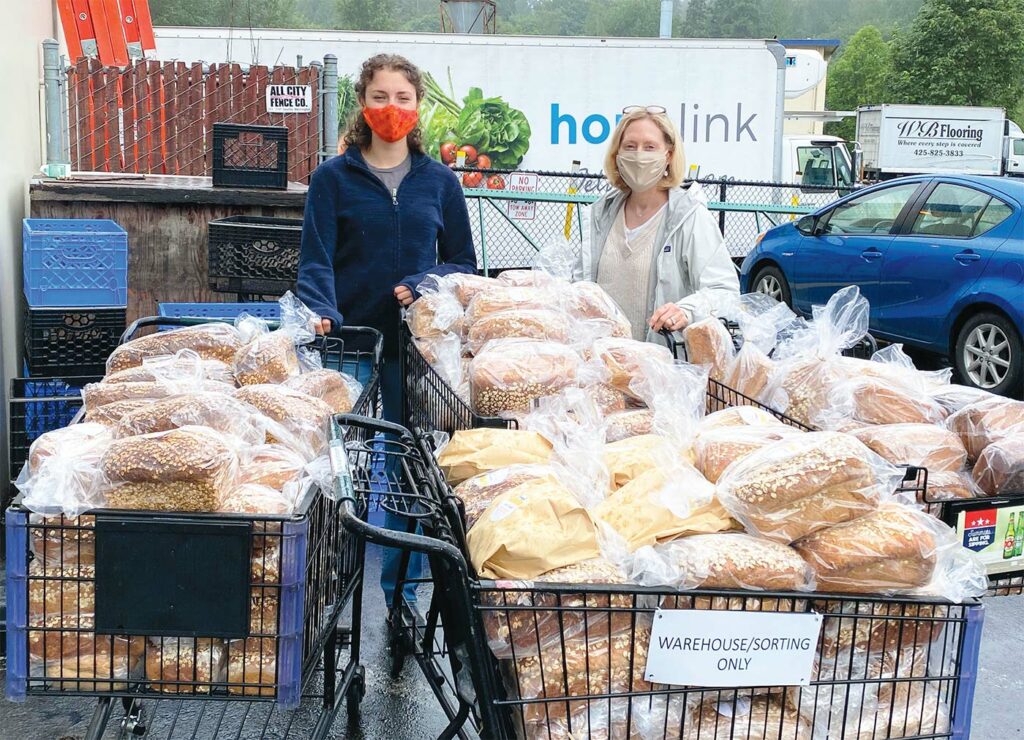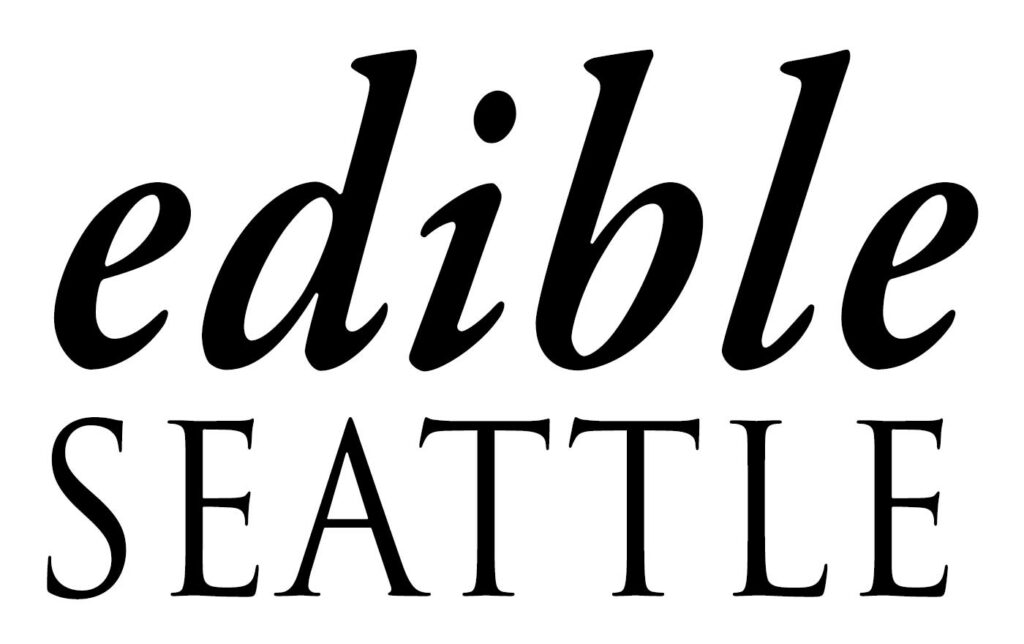
From the field to the oven, home bakers are reducing hunger, one loaf at a time
PHOTOS BY JENNIFER BENNER, KATHERINE KERHLI, LINDSAY KUCERA AND CAIRNSPRING MILLS
Twice a month, an extraordinary thing happens. Across the Pacific Northwest, food banks receive donations of a flavorful whole grain bread, toasty brown and flecked with oats. It’s a homey loaf—pulled from the ovens of volunteer bakers for Community Loaves, who have given their time and ingredients to cook for neighbors in need. It’s a process that starts in a Washington wheat field and weaves together a network of people all working together to share, support and feed.

THE MILLER
The hard red spring wheat that makes the high-extraction bread flour used by Community Loaves is generally grown within 15 miles of Skagit Valley’s Cairnspring Mills in Burlington, where it is stone-milled through a process that produces a flour with greater nutritional benefits and exceptional baking performance.
Started in 2016 by Kevin Morse, Cairnspring is an effort to revitalize a local grain economy in western Washington. The region’s farmers had traditionally grown wheat as a rotation crop to break disease cycles in the soil and sold the grain to the commodity market—often barely breaking even and sometimes at a loss.
Morse sought to offer a higher price for the grain, and to mill in a way that preserved nutrition, while avoiding use of pesticides that can harm humans, pollinators and wildlife. The resulting flours are now sought out by professional bakers at The Breadfarm, Grand Central Baking and California’s Tartine Bakery, among others. Cairnspring is also the flour of choice for Community Loaves, to be mixed with an organic fine bread flour from Fairhaven Mill, also in Burlington.
Community Loaves bakers purchase up to 6,000 pounds of flour a month, from the two mills combined, to bake for the food banks. Morse is delighted. “We’re a social purpose corporation,” he says, “so this has helped us express our values around community as well.”
THE DRIVER
Once a month, volunteer Bob Witzgall drives to the Port of Skagit to pick up several pallets of flour from Cairnspring and Fairhaven Mills. The retired civil engineer started volunteering after seeing an article about Community Loaves on a local news website.
“A lot of us were just stuck at home during COVID, and baking was something I could do to help,” Witzgall explains. He went from baking, to helping with delivery logistics as well, driving from Skagit Valley to Olympia for supply drop offs.
One day, Witzgall walked past the Edmonds Food Bank and noticed their trucks sitting idle. This led to a partnership between Community Loaves and the food bank. “I volunteer at the food bank every Monday,” he says, “my wife does food sorting as well. And on Sundays we do a food pickup from the farmers market.”
Volunteering at the food bank allows Witzgall to see the donated bread in action. “The Community Loaves bread always goes first,” he says.
“It gave us something to do that made us feel like the world wasn’t spiraling out of control and we had some agency.” —Katherine Kehrli

THE FOUNDER
One of the delivery locations on Witzgall’s supply route is the Kirkland home of Katherine Kehrli, founder and mastermind behind Community Loaves. As associate dean at Seattle Culinary Academy, Kehrli witnessed the impact of COVID-19 shutdowns, as students lost restaurant jobs. They went from feeding the city to needing help feeding themselves—often turning to food banks for assistance. Kehrli wondered if home bakers might be able to help.
In April 2020, Kehrli delivered the first donation of 19 loaves of freshly baked bread to the Kirkland warehouses of Hopelink, a local food assistance program. By November, the group had grown to 300 bakers and had donated 4,000 loaves. “It gave us something to do that made us feel like the world wasn’t spiraling out of control and we had some agency,” Kehrli says.
Community Loaves has continued to grow—taking over Kehrli’s three-car garage. Pallets of flour are delivered here and repackaged in smaller quantities as part of their flour fundraiser. This allows volunteers to purchase these sought-after flours at a discount, while the income helps fund the organization. More recently, they’ve added an energy cookie to their donation items. Large mixers in Kehrli’s converted garage combine the flour and almond meal used for the cookie base.
Kehrli’s home—called “the Mother Ship” by volunteers—is also where she broadcasts virtual training sessions for new bakers, does outreach to participating food banks (currently 44 sites), and orchestrates a website full of puns and humor (the organization’s tag-line: “We’re breader together”). She also works to expand the program. There are now Community Loaves bakers in Oregon and Idaho, and most recently California. Kehrli works on the nonprofit full time, assisted by a team of volunteers to help with the flour fundraiser.
While Kehrli’s approach is fun and playful, she’s serious about the cause. “We’re compelled, to the best of our ability, to make sure our neighbors do not go hungry,” she says.
THE BAKER
Valerie Stein started baking for Community Loaves in 2021, after hearing about it on a radio program. A fairly experienced baker—she learned as a teen—Stein soon went from baking to helping with the supply orders for her Edmonds donation hub.
“It’s a community I wouldn’t have otherwise,” she says. “You think it’s solitary, but then you go to drop-off day and you see all these loaves that look just like yours—and we’ve all had failures and we’ve all had successes and we’ve all learned more about baking.”
Being able to help her community is a particular pleasure. “Everyone who makes one loaf or 20 is part of this huge network that makes the world a better place,” she says. “When I fill my bags with loaves, I am making a difference.”
THE HUB COORDINATOR
Valerie Stein takes her loaves to the Edmonds donation hub at the home of food writer Nancy Leason. Every other Sunday, Leason’s entryway becomes bread central, receiving sometimes more than 100 loaves. Leason got involved early in the pandemic, when she saw Kehrli’s posting about the project on Facebook.
“One of the things that was so wonderful,” she says, “is that I was meeting actual neighbors—people who live within walking distance of my house—and some of them have become good friends.” She’s also sharpened her baking skills. “Any time I have a question, I have this group of people I can ask.”
“During COVID, there wasn’t much else to do,” Leason admits, “and it was a way to help. But we’re still doing it, so there’s something important there.”
Participant numbers have fallen since the height of the pandemic, but total bread donation numbers at the Edmonds hub have gone up. The Community Loaves recipe yields four loaves—and the organization recommends each baker keep one to eat or share—but some participants bake more than one batch. Other hubs have seen growth through new bakers joining.
On donation Sundays, Valerie Stein brings her bread, and Bob Witzgall walks over with his grandchildren, pulling their loaves in a little wagon, while another participant brings Leason home-baked treats for her dogs. “It feels like what neighborhoods should be,” Leason says. And the oat-topped loaves get stacked into boxes, ready to be delivered.
“Everyone who makes one loaf or 20 is part of this huge network that makes the world a better place. When I fill my bags with loaves, I am making a difference.” —Valerie Stein, baker


THE FOOD BANK
On Monday, Bob Witzgall drives the bread to the Edmonds Food Bank. There, food bank director Casey Davis and her staff prioritizes the bread for their senior clients, who often struggle to get adequate nutrition. “It’s a fantastic product,” she says.
“We want communities to become self-sufficient in their ability to access food,” explains Davis. “Growing food in community gardens, sharing food, supporting local farmers—Community Loaves fits in with that. This is community members giving up their time to share local foods with the community.”
When Witzgall approached Davis about using the food bank trucks for flour pickups, she was glad to support. “Those trucks are just sitting here at that time of the day,” she said. “Let’s figure out how to make it happen.” Despite COVID-19 restrictions being removed, Davis says food bank usage has gone up. While service rates in 2019 were 365 households a week, increasing to 487 households in 2020, current numbers for 2023 range between 650-800 households a week. With food and housing prices increasing dramatically, those on low or fixed incomes are struggling.
This is where Community Loaves comes in—with simple food based on locally grown grains and time-honored techniques, baked in community for the community. After more than 125,000 bread loaves donated, nearly 60,000 energy cookies, and 740 bakers banding together to make a difference, it turns out the tagline is right: we are breader together.
Note: Community Loaves is planning to move their headquarters to a new site in Kirkland, with a retail area where visitors can purchase flour and support the organization. For the latest information, see communityloaves.org
